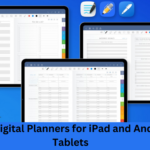Spreadsheets have been a long-standing tool in business, education, and personal productivity. Their versatility in handling data, performing calculations, and providing insights through analysis has been unparalleled.
With the integration of Generative Pretrained Transformer (GPT) technology, spreadsheets are poised to take a quantum leap forward. Now, if you find yourself curious about how to utilize this new feature, you should consider getting started with SheetGPT to enhance your Google Sheets experience.
GPT meets spreadsheets – A new bestie for your data needs
Picture this: you’re staring at rows upon rows of data in your spreadsheet, and oh, how you wish those cells could talk and do the heavy lifting for you! Well, the future is knocking, and guess what? It’s bringing artificial intelligence into our good ol’ spreadsheet game. Gone are the days when you’d get by with basic formulas; now, getting started with SheetGPT is like hiring a virtual whiz kid who specializes in decoding and automating your data. Imagine harnessing the power of AI to not only make sense of those numbers but also to uncover insights that’d otherwise take hours of brain-racking analysis. It’s like having a crystal ball, but for data – totally the upgrade we’ve all been waiting for!
How AI is reshaping our approach to data
Have you ever wished for a personal assistant who’s a math genius? That’s pretty much what AI in spreadsheets boils down to. With GPT (Generative Pre-trained Transformer) technology weaving its way into the fabric of data analytics, you get more than just automated calculations. We’re talking about predictive analytics that can project future trends and provide you with insights that might just make you the next office oracle.
Think of a small business owner who can now forecast sales and stock needs with a click, or a marketing guru who can tailor campaigns based on AI-driven customer behavior predictions. The key takeaway? Don’t dismiss the AI buzz as techy background noise; it might just be the secret sauce to your next big success.
What does GPT integration looks like in action
So, what does all this AI talk mean on a regular Tuesday when you’re knee-deep in spreadsheets with deadlines looming? It means breathing easy. You know those times when you’ve written a custom function that just won’t cooperate? Imagine a world where your spreadsheet understands natural language queries and churns out custom functions like it’s churning butter – smooth, efficient, and somewhat magical.
From sorting out complex datasets to crafting scenarios based on ‘what-if’ questions, GPT integration is like turning on the autopilot while navigating the skies of data analysis. And businesses have taken notice; when you see how much time is saved and how many more coffees you can enjoy in peace – it’s no wonder this AI gig is catching on.
Beyond the numbers – the transformative effect on businesses
Let’s zoom out from those number-filled cells and look at the bigger picture. When spreadsheets start getting a brain boost from AI, the ripple effect washes over entire businesses. Industries from retail to healthcare are switching from hit-and-miss strategies to laser-targeted approaches.
Sales predictions aren’t just educated guesses anymore – they’re informed forecasts. And the strategic planning once left to intuition is now bolstered by AI-driven insights, giving businesses the competitive edge they’ve been thirsting for. As sheets smarten up, the capabilities stretch far beyond number crunching to informing critical decisions that shape the future of enterprises.
Peering into the crystal ball – the future of AI in spreadsheets
Let’s take a moment to gaze into our crystal ball – not one of mystical fumes, but one full of algorithms and data. As GPT continues to evolve, we can only begin to imagine the features set to debut in our beloved spreadsheets.
Of course, there will be challenges and important ethical considerations as data handling grows ever more sophisticated. But one thing’s clear – the synergy of human and artificial intelligence is setting the new standard for a tech-forward workspace. This collaboration promises not just a transformation in how we handle data, but a revolution in the very way we think about and harness the power of information.








